Is reactive electricity available?
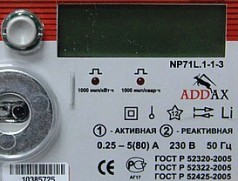 For power engineers of enterprises and large shopping centers, there is no doubt that reactive energy exists. The monthly bills and the very real money that goes to pay for reactive electricity convinces us of the reality of its existence. But some electrical engineers seriously, with mathematical calculations, prove that this type of electricity is fiction, that the separation of electric energy into active and reactive components is artificial.
For power engineers of enterprises and large shopping centers, there is no doubt that reactive energy exists. The monthly bills and the very real money that goes to pay for reactive electricity convinces us of the reality of its existence. But some electrical engineers seriously, with mathematical calculations, prove that this type of electricity is fiction, that the separation of electric energy into active and reactive components is artificial.
Let's try and we will sort this issue out, especially since the creators of “unique” and “revolutionary” energy-saving devices speculate on not knowing the differences between different types of electricity. Promising huge percentages of energy savings, they knowingly or unknowingly replace one form of electrical energy with another. Let's start with the concepts of active and reactive electricity. Without going into the wilds of the formulas of electrical engineering, you can determine ...
Transistors Part 2. Conductors, insulators and semiconductors
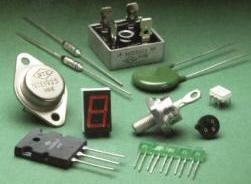 In electrical engineering, various materials are used. The electrical properties of substances are determined by the number of electrons in the outer valence orbit. The fewer electrons are in this orbit, the weaker they are associated with the nucleus, the easier they can go to travel.
In electrical engineering, various materials are used. The electrical properties of substances are determined by the number of electrons in the outer valence orbit. The fewer electrons are in this orbit, the weaker they are associated with the nucleus, the easier they can go to travel.
Under the influence of temperature fluctuations, the electrons break away from the atom and move in the interatomic space. Such electrons are called free, and they create an electric current in the conductors. Is there a large interatomic space, is there room for free electrons to travel inside matter?
The structure of solids and liquids seems continuous and dense, reminiscent in structure of a ball of thread. But in fact, even solids are more like a fishing or volleyball net. At the household level, this certainly cannot be discerned, but it has been established by accurate scientific research ...
Transistors: purpose, device and principles of operation
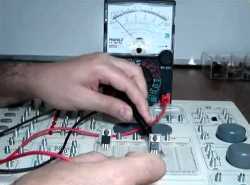 The transistor did not immediately receive such a familiar name. Initially, by analogy with lamp technology, it was called a semiconductor triode. The modern name consists of two words. The first word is “transfer” (here, I immediately recall “transformer”) means a transmitter, converter, and carrier. And the second half of the word resembles the word "resistor" - a detail of electrical circuits, the main property of which is electrical resistance.
The transistor did not immediately receive such a familiar name. Initially, by analogy with lamp technology, it was called a semiconductor triode. The modern name consists of two words. The first word is “transfer” (here, I immediately recall “transformer”) means a transmitter, converter, and carrier. And the second half of the word resembles the word "resistor" - a detail of electrical circuits, the main property of which is electrical resistance.
It is this resistance that occurs in Ohm's law and many other formulas of electrical engineering. Therefore, the word "transistor" can be interpreted as a resistance converter. About the same as in hydraulics, the change in fluid flow is controlled by a valve. For a transistor, such a “valve” changes the amount of electric charges that create an electric current. This change is nothing but a change in the internal resistance of a semiconductor device ...
Electronic designers for the study of electrical engineering and electronics
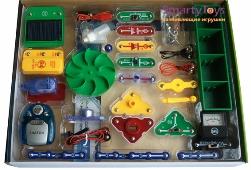 The electronic constructor is an excellent developing game designed for the popular explanation in an interesting and fascinating form of various physical phenomena and processes.
The electronic constructor is an excellent developing game designed for the popular explanation in an interesting and fascinating form of various physical phenomena and processes.
Be sure to buy an electronic designer is for students in grades 6-11, because it is no secret that for a complete and clear understanding of physics, a school course alone is not enough. Therefore, today schools that use advanced teaching technologies in their educational process use electronic designers as a visual aid in practical classes in physics. And this is understandable, because modern electronic designers have been developed on the basis of the latest achievements of science and technology and have been highly appreciated by teachers.
Electronic designers are made of high-quality environmentally friendly plastic, reliable connecting elements, they use the most modern electronic components ...
Into the world of electricity - like the first time! -2. And what is inside the disk?
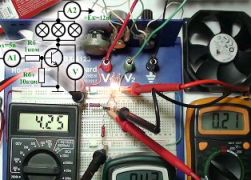 At the request of the readers of the site I’ll do a short review of the new disk of Mikhail Vanyushin "Into the world of electricity - like the first time! -2"
At the request of the readers of the site I’ll do a short review of the new disk of Mikhail Vanyushin "Into the world of electricity - like the first time! -2"
Actually, you can see the full list of issues that are discussed in the training course on the selling site itself. In this article I will pay more attention to the forms of information that the author uses in his course.
Many people mistakenly think that only videos are recorded on the disc. In fact, the instructional video is just a few elements of the course. The main part of it is a very high-quality and well-illustrated textbook on electrical engineering and the basics of electronics in electronic format. All this is packaged in an easy-to-use software shell with logically clear and convenient navigation. The entire content of the course is divided into large thematic sections, which, in turn, are divided into subsections ...
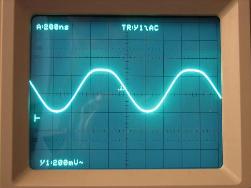 When dealing with television and radio broadcasting, as well as modern forms of communication, very often you have to deal with such terms as “analog signal” and “digital signal”. For experts, there is no secret in these words, but for people ignorant the difference between the “digit” and the “analogue” may be completely unknown. And yet there is a very significant difference.
When dealing with television and radio broadcasting, as well as modern forms of communication, very often you have to deal with such terms as “analog signal” and “digital signal”. For experts, there is no secret in these words, but for people ignorant the difference between the “digit” and the “analogue” may be completely unknown. And yet there is a very significant difference.
When we talk about a signal, we usually mean electromagnetic oscillations that induce EMF and cause current oscillations in the receiver antenna. Based on these vibrations, the receiving device — a television, radio, walkie-talkie or cell phone — makes up the “idea” about which image to display (if there is a video signal) and what sounds this video signal should accompany.
In any case, the signal of a radio station or a mobile communication tower can appear both in digital and in analog form. After all, for example, the sound itself ...
What are electrical circuits for and what types are they
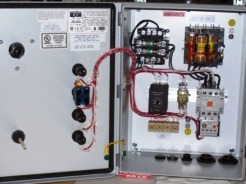 There are several different types of electrical circuits and any competent electrician must be sure to understand why they are needed, how they differ from each other, what information they contain, what conventions are used on different circuits, how to read them correctly.
There are several different types of electrical circuits and any competent electrician must be sure to understand why they are needed, how they differ from each other, what information they contain, what conventions are used on different circuits, how to read them correctly.
Very often people confuse the terms “types” and “types” of schemes. By type of circuit, they are divided into electric, pneumatic, hydraulic and combined. Combined circuits are most common in projects of automation of various technological processes, when in projects together with various electric motors, devices, sensors, elements of pneumatic automation and hydraulics are simultaneously used. Such schemes are called combined electro-pneumatic, electro-pneumatic or electro-hydraulic. By type, all electrical circuits are divided into ...
 The first thing to do is prepare everything you need for soldering: a soldering iron, a small sponge, solder, pliers or tweezers, side cutters.
The first thing to do is prepare everything you need for soldering: a soldering iron, a small sponge, solder, pliers or tweezers, side cutters.
Plug the soldering iron into a power outlet and dampen the sponge with water. When the soldering iron heats up and begins to melt the solder, cover the soldering iron tip with solder, and then wipe it on a damp sponge. In this case, do not keep the sting in contact with the sponge for too long, so as not to overcool it. By wiping the sting against a sponge, you remove the remnants of the old solder from it. And in the process, to keep the soldering iron tip clean from time to time, wipe it with a sponge.
Before soldering, soldered areas need to be tinned or use already tinned parts.Manual soldering is probably hundreds or thousands, and since then, almost nothing has changed in technology, resin (rosin), it was then resin, and tin and lead also have not changed. Soldering Training Technique ...
